Thanks to a childhood promise made to the late, great funnyman Slappy White, I have an obligation to observe, document, and report on all manner of automotive lighting minutiae. If you don’t believe, me, call the Slappy White Memorial Library in Baltimore, and one of the docents can show you the original signed and notarized document. I’m happy to say that I was able to uphold my agreement with Slappy while at Goodwood this year, when I encountered some fine examples of what I always felt were among the least-understood parts of automotive lighting: sidelights.
Here in America, we tend to call these lights “parking lights,” but they’re not really the same. In the US, parking lights are almost always just the amber turn indicators burning steadily; in the UK (and other Commonwealth nations, and other countries) sidelights need to be separate light units, and must be white, not amber.
There are essentially two tasks asked of the sidelight, one far more common than the other. The more common one is to simply be a position light, not for making the road more visible, but to make the car that possesses the light more visible itself. They’d only be used alone, without full headlamps, in dawn/dusk/severe overcast low-light contexts, when you can see the road well enough, but you may want to be a bit more conspicuous.
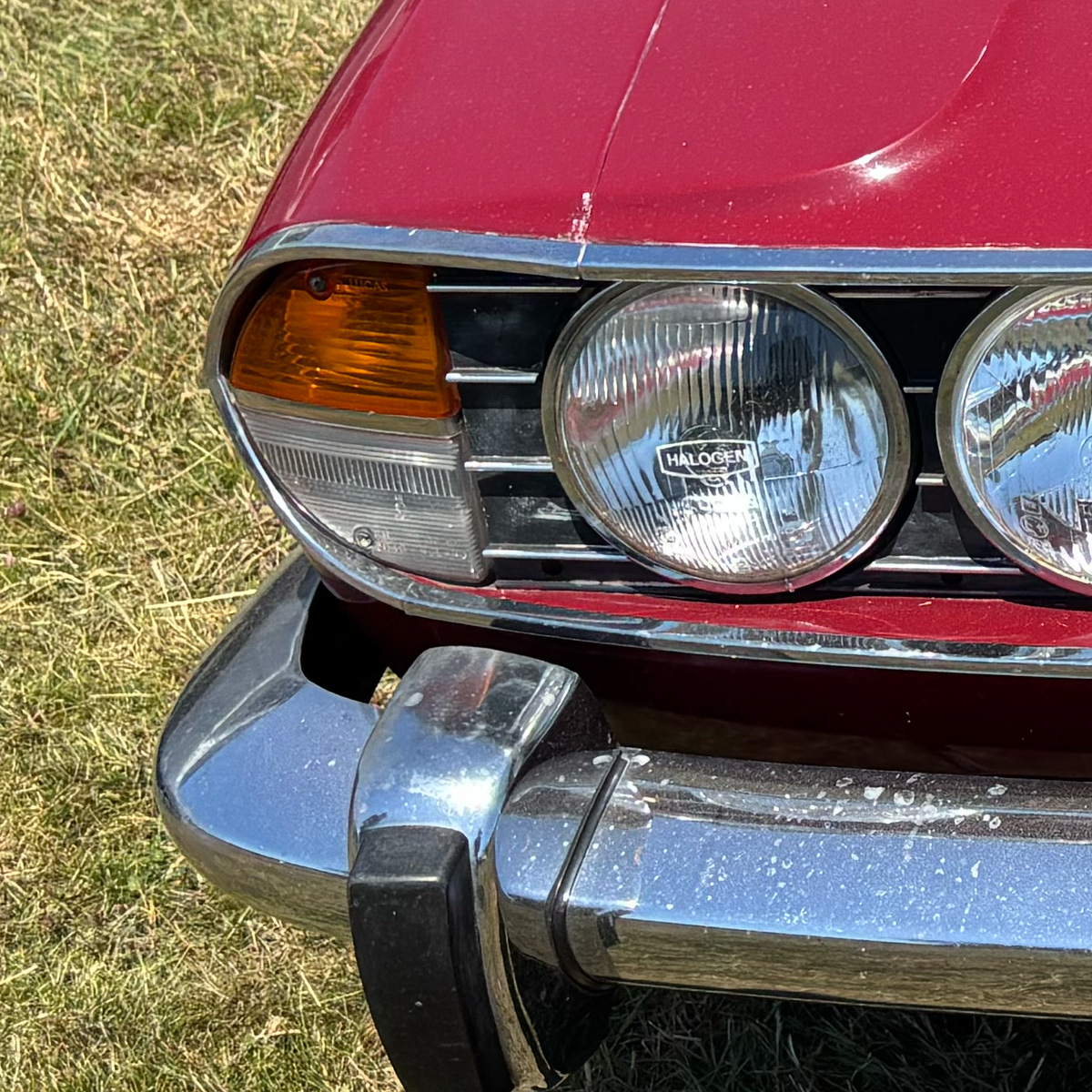
They can also act as a sort of backup to headlights, in the sense that if a headlight burns out, the sidelight is there to still help indicate the width of the vehicle, and prevent a car from being mistaken for a motorcycle.
We’ll get to the less common use soon, I promise.
Since Goodwood is in the United Kingdom, the sidelights I encountered were all white/clear, separate and majestic in their own humble manner. Let’s take a look at some of these, starting with what in this context I’ll call “modern,” even though I think the most recent ones of these I photographed were from the 1970s.
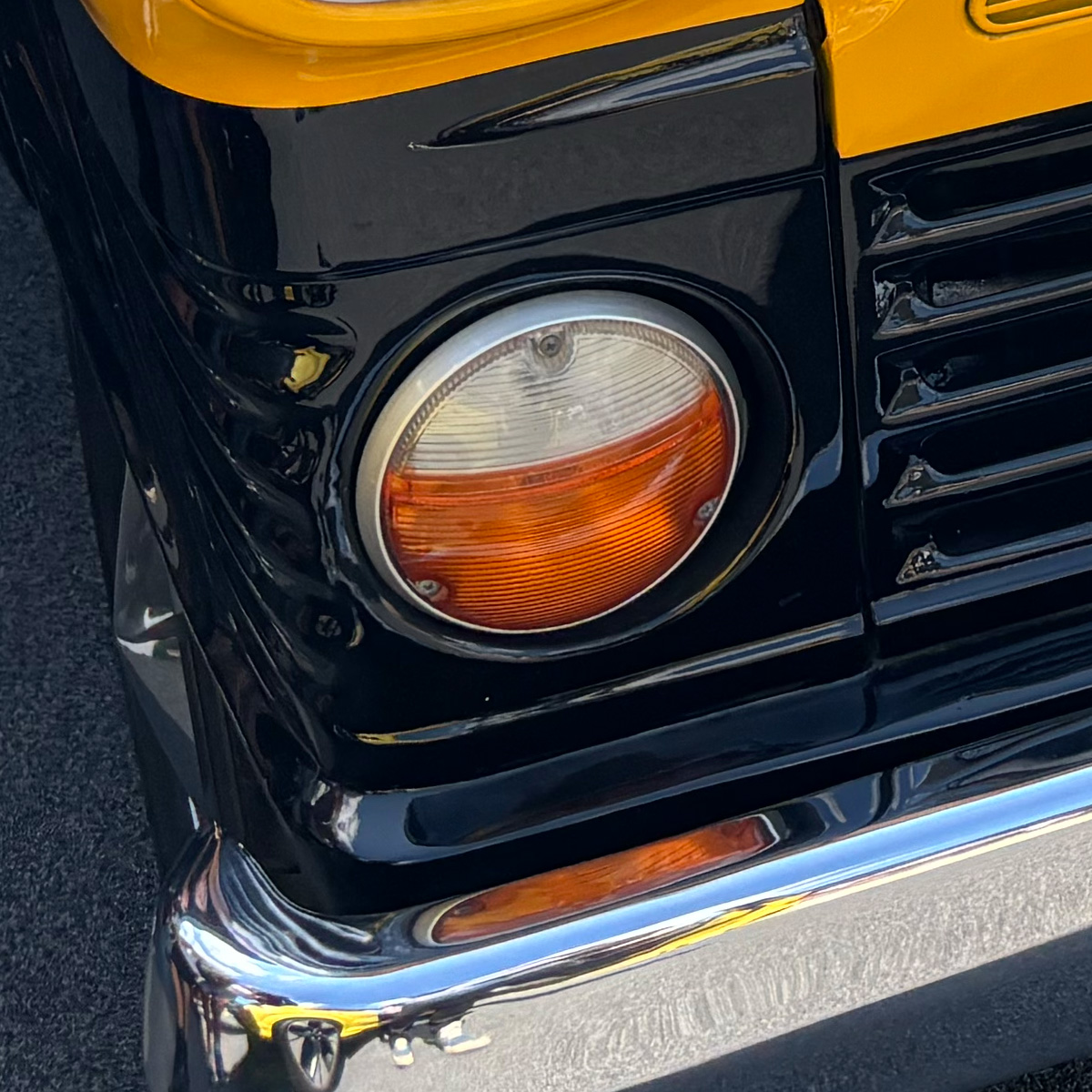
Above is a good example of a typical sort of sidelight installation, on a Ford Transit van from the ’60s. These sort of light units, divided between amber indicator and clear sidelight, were extremely common.
While combining the sidelights with an indicator unit became quite common, there were other ways to accomplish the sidelighting challenge; sometimes a small bulb is incorporated into a larger headlamp unit, like on this lovely Facel-Vega:

Some of the cars I saw seemed to use both methods, an inset bulb and a separate indicator-unit, as on this beautiful Lamborghini 350 GT:
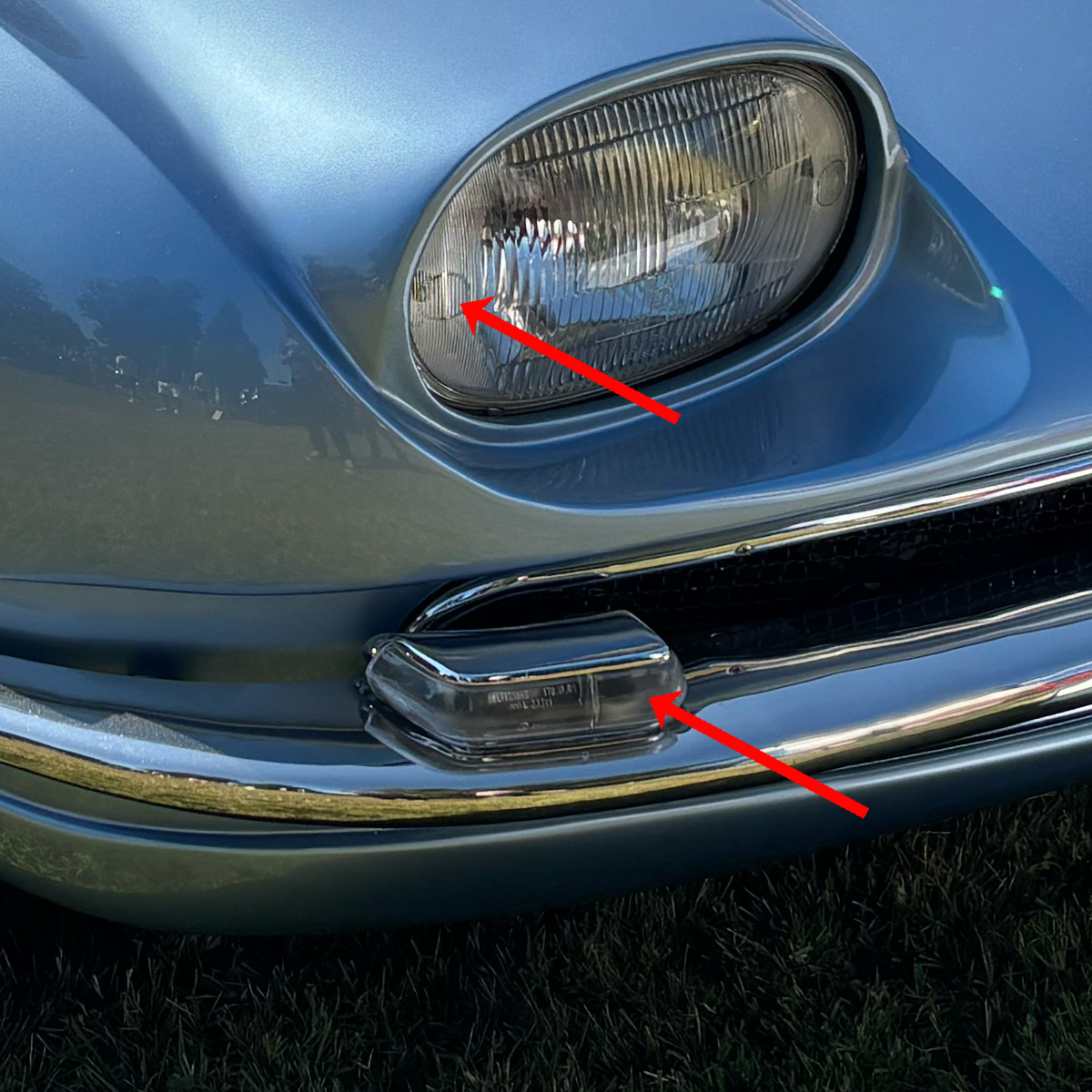
There seemed to be a small sidelight bulb inside that (Cibie?) headlamp, and there was a chamber in the indicator unit as well. I’ve never seen one of these with its sidelights on, so I’m not sure if it uses both. Pretty cool, regardless.
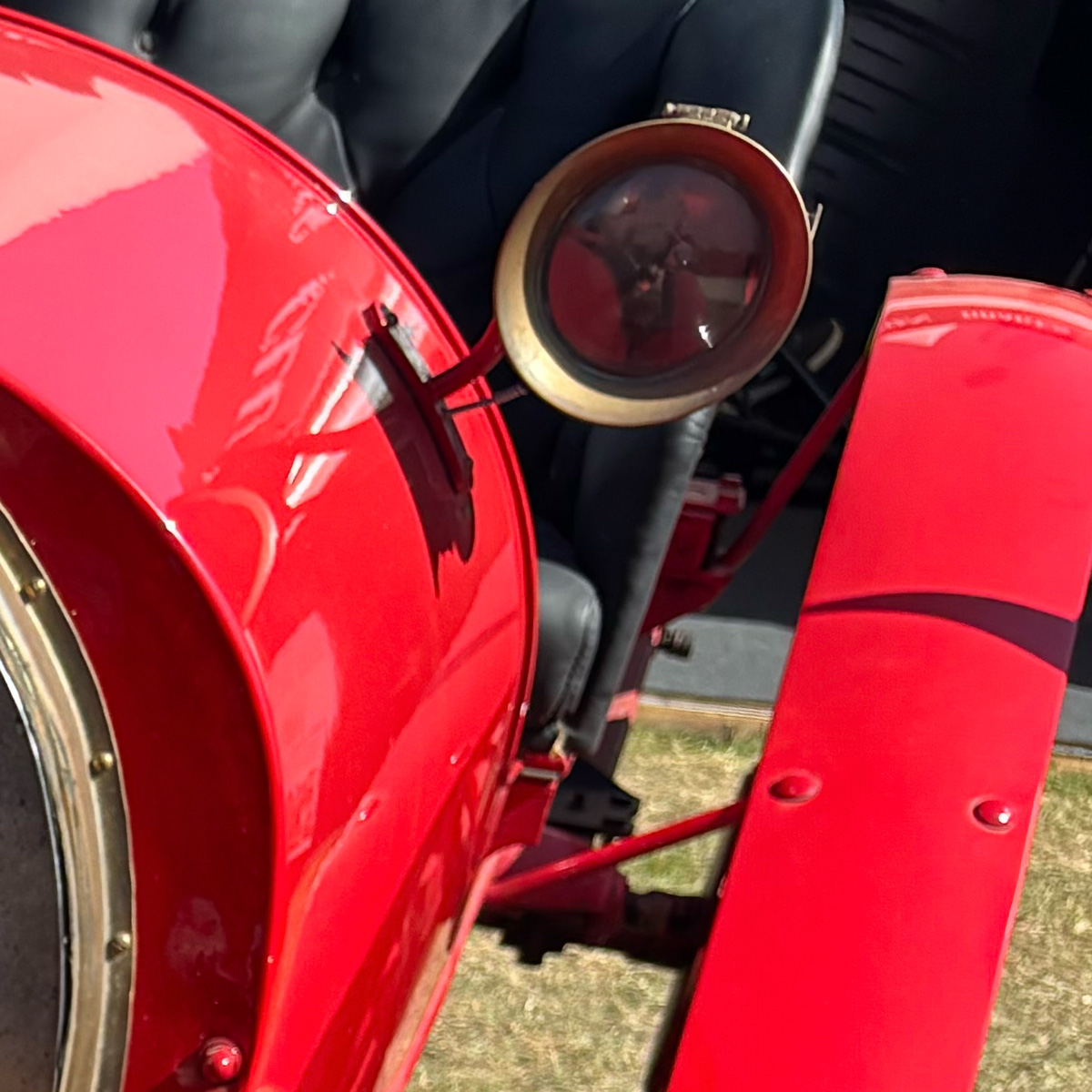
Sidelights close to the headlights or indicators became common sometime around the 1950s, I’d think, but prior to that era, you could find them in a variety of places, ranging from fendertops to cowls to the sides of a hood. This Pilain has them at the rear of the hood, by the cowl, a not uncommon place for cars of this era, the 1910s-1920s.
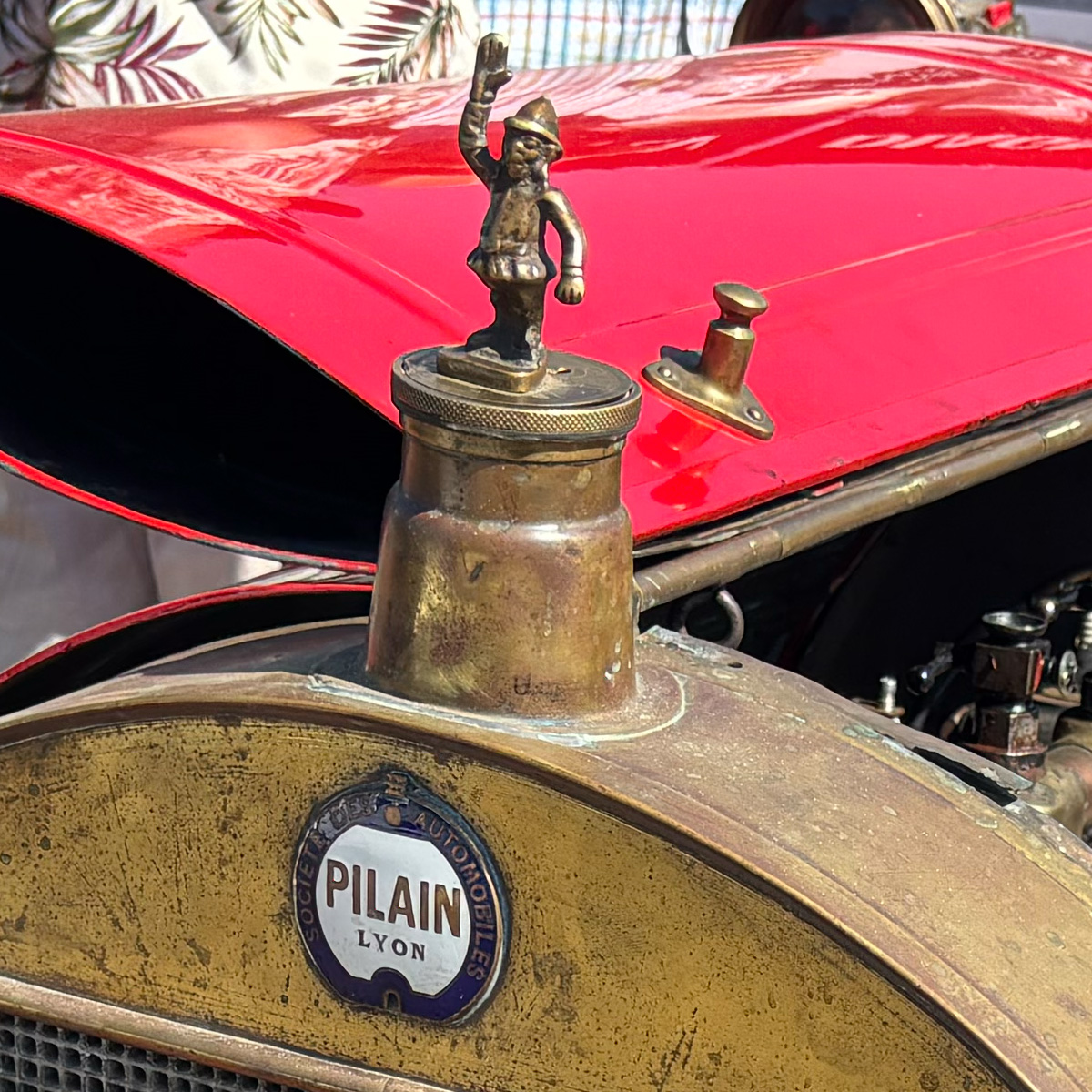
Pilain is not a marque you see often; the French brand made expensive, well-built cars from around 1908 to 1920 or so, and I just wanted to include this shot of this very charming hood ornament of a … traffic cop? Fireman? Gnome? It’s fun.
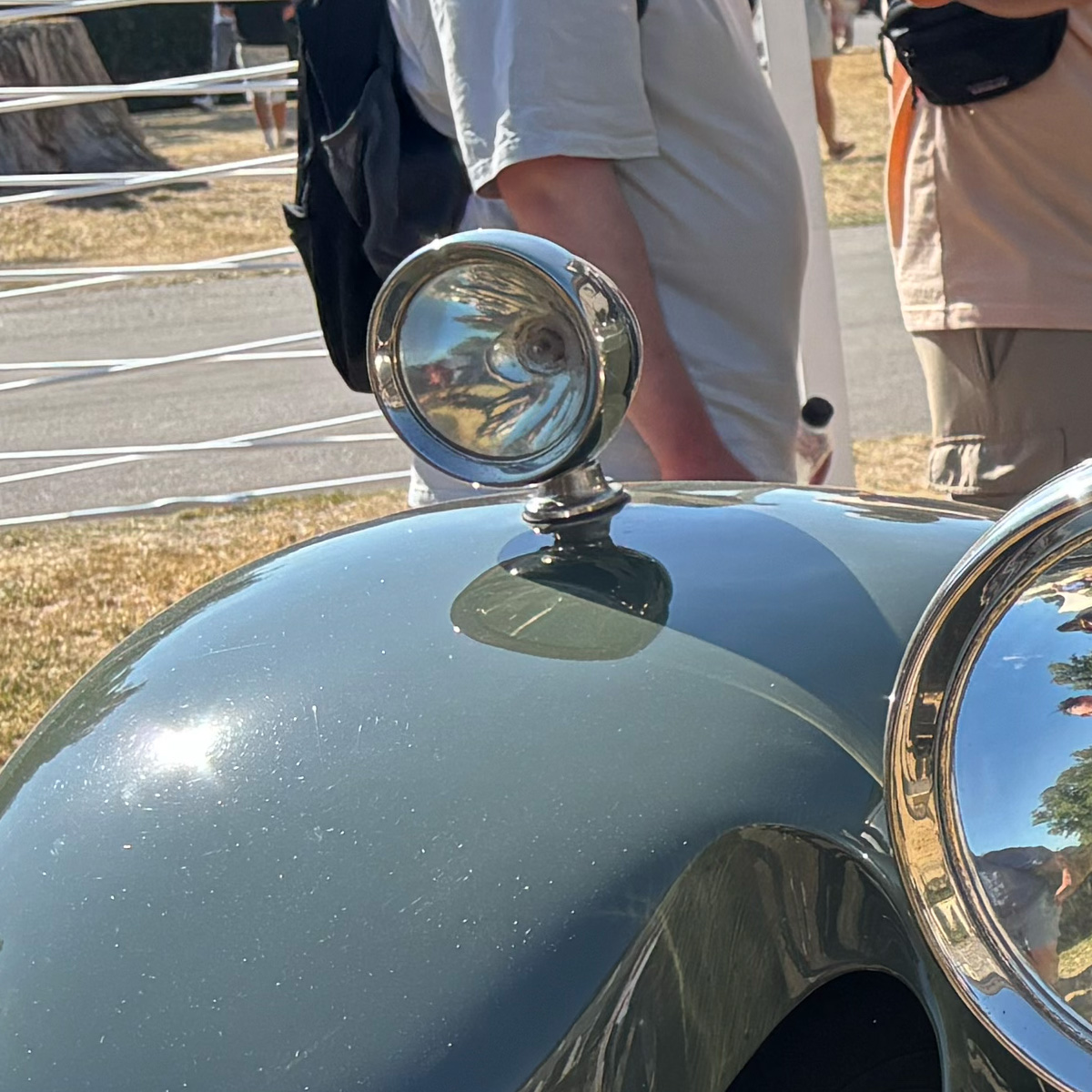
Sometimes, sidelights would be effectively just miniaturized headlights, like the ones on this Rolls-Royce Silver Ghost. They look like intense lights, but they just have a small, low-wattage bulb in there.
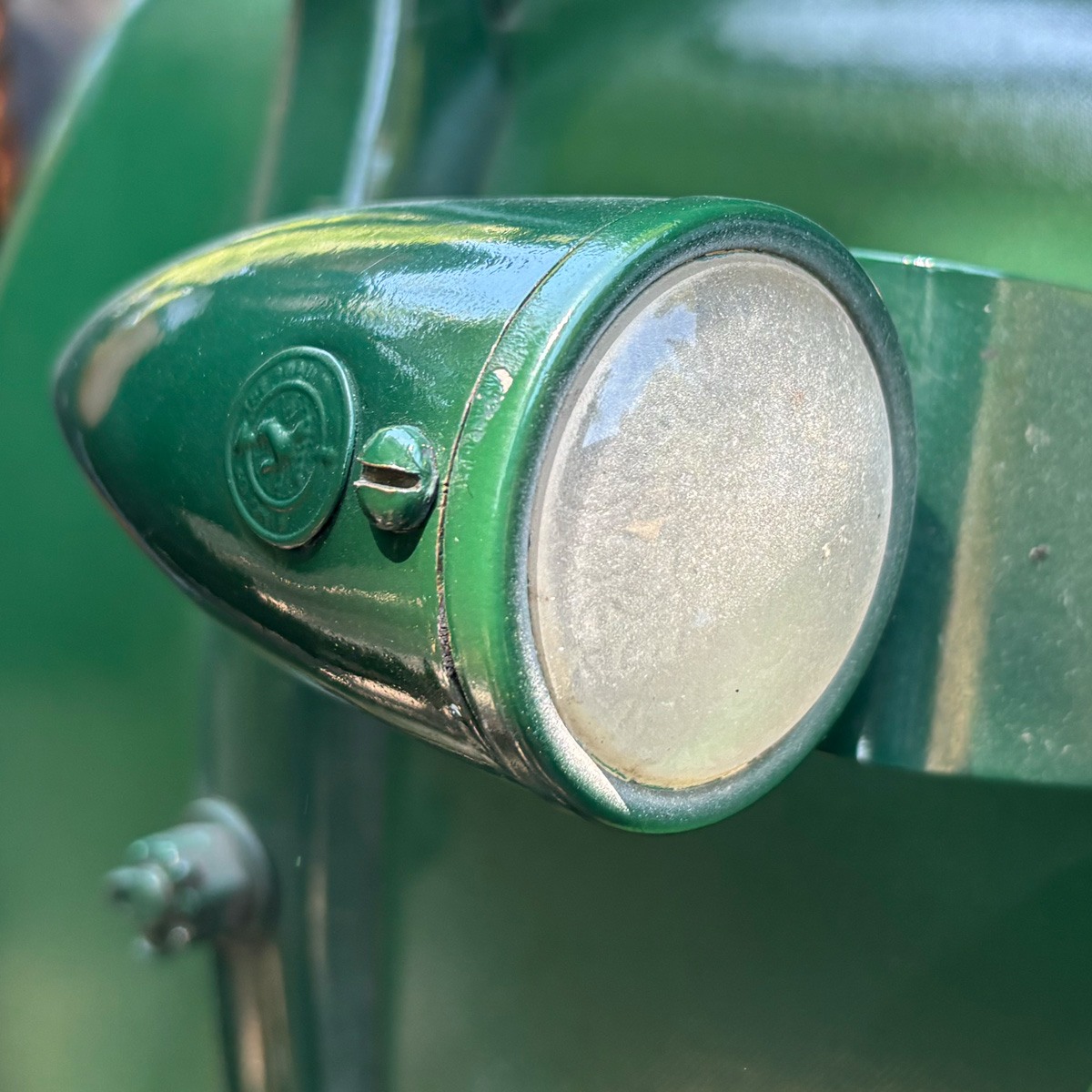
These Bentley sidelights have an interesting kind of frosted glass lens that you see on sidelights of this era at times, and on almost no other kinds of lights, which are usually fluted or have fresnel-type lenses.
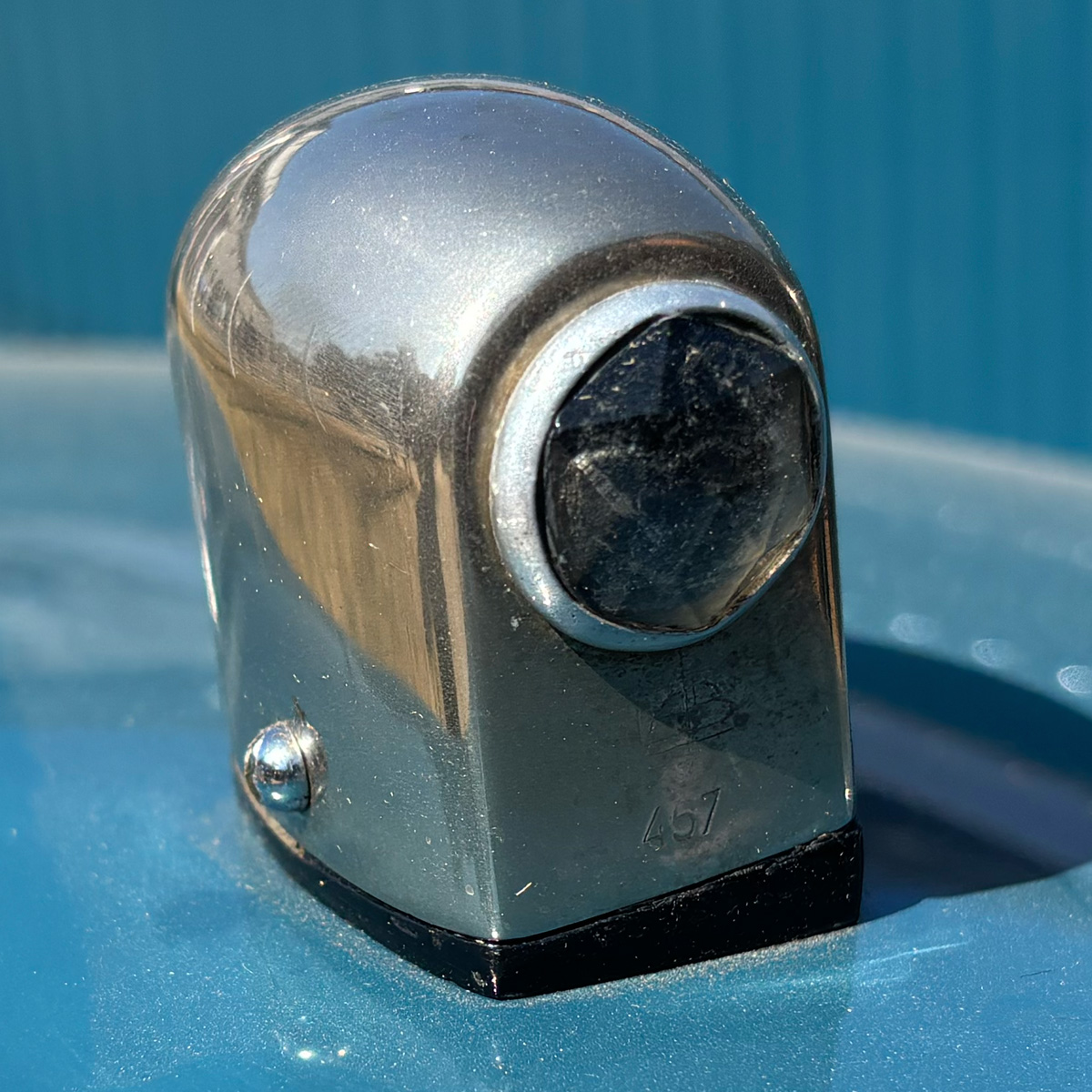
Some sidelights are incredibly small and delicate, almost jewelry-like, especially when they have faceted lenses, like this one. It also seems to be well equipped for the sidelight’s other, less common use, thanks to this second lens at the rear:
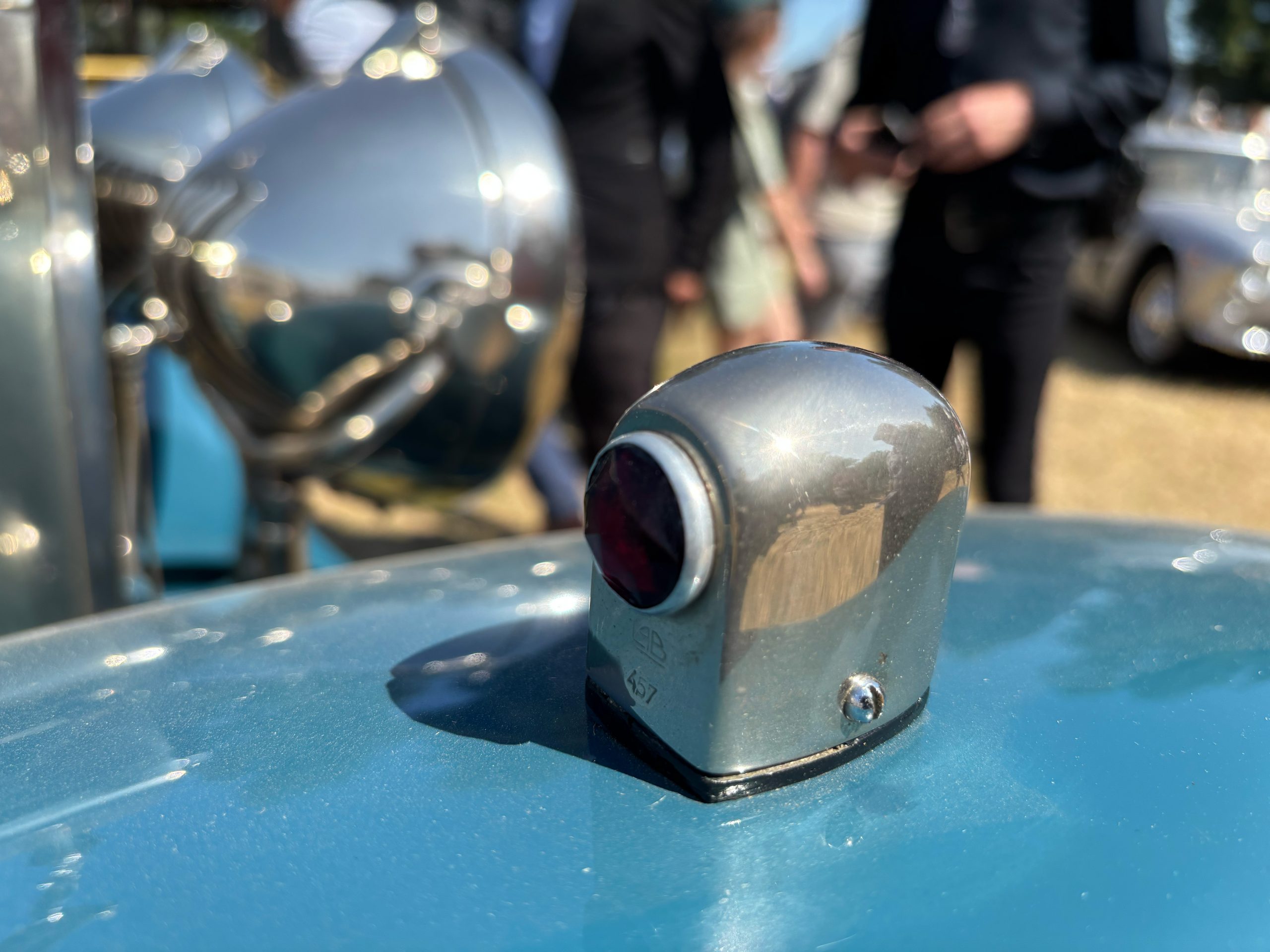
You’ll see this dual-lens setup on a number of these old sidelights, like this one, with an interesting, nearly-spherical clear front lens:

This teardrop-shaped light tapers to a little red lens at the rear:
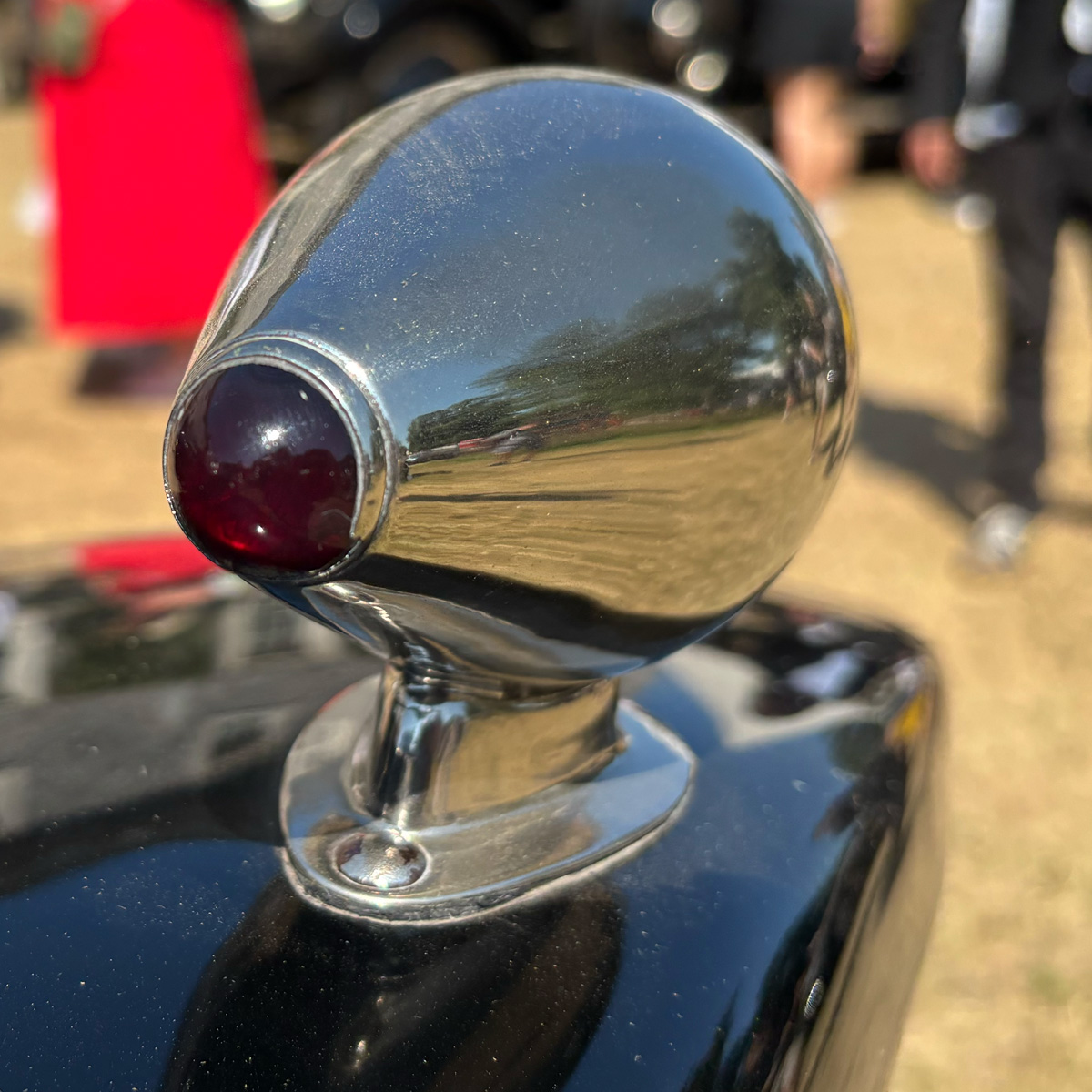
The reason for this is that sidelights were also intended to be left on when a car is parked at night along the side of a street. I’ve seen references that say they legally must be used when parking a car on the side of a road with a speed limit of 30 mph or greater, but I’ve never really seen this in use any time I’ve been in the UK.
This feature is similar to German-style parking lights that were used on a number of German makes, from VW to Porsche to NSU and so on. These lights were clear (or amber) facing forward, red facing rearward, and would only be illuminated on the side of the car facing the road:
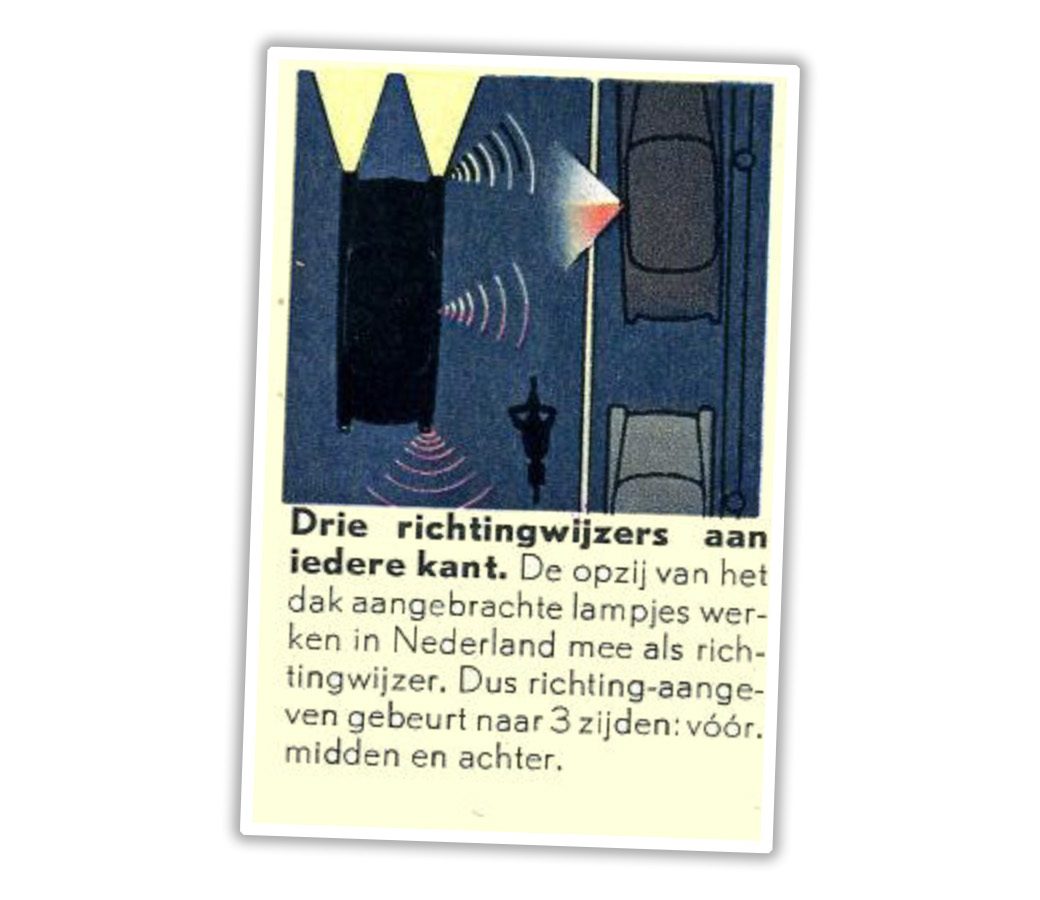
Here’s the Hella unit used on VWs, mostly VW Type 3s; note the clear lens up front, and the red lens behind:

The UK versions would just leave all four lights on while parked – two front sidelights, taillights at the rear – and while that would definitely help your car being spotted on a dark road, I think most people are too nervous about battery life to do this, even if, technically, these little lights shouldn’t draw that much power.
This is all, of course, absurdly trivial, but I’ve always found these tiny lights appealing in a strange way. They’re under-appreciated, and I hope you’ll give them some consideration in your next vehicular lighting reveries.

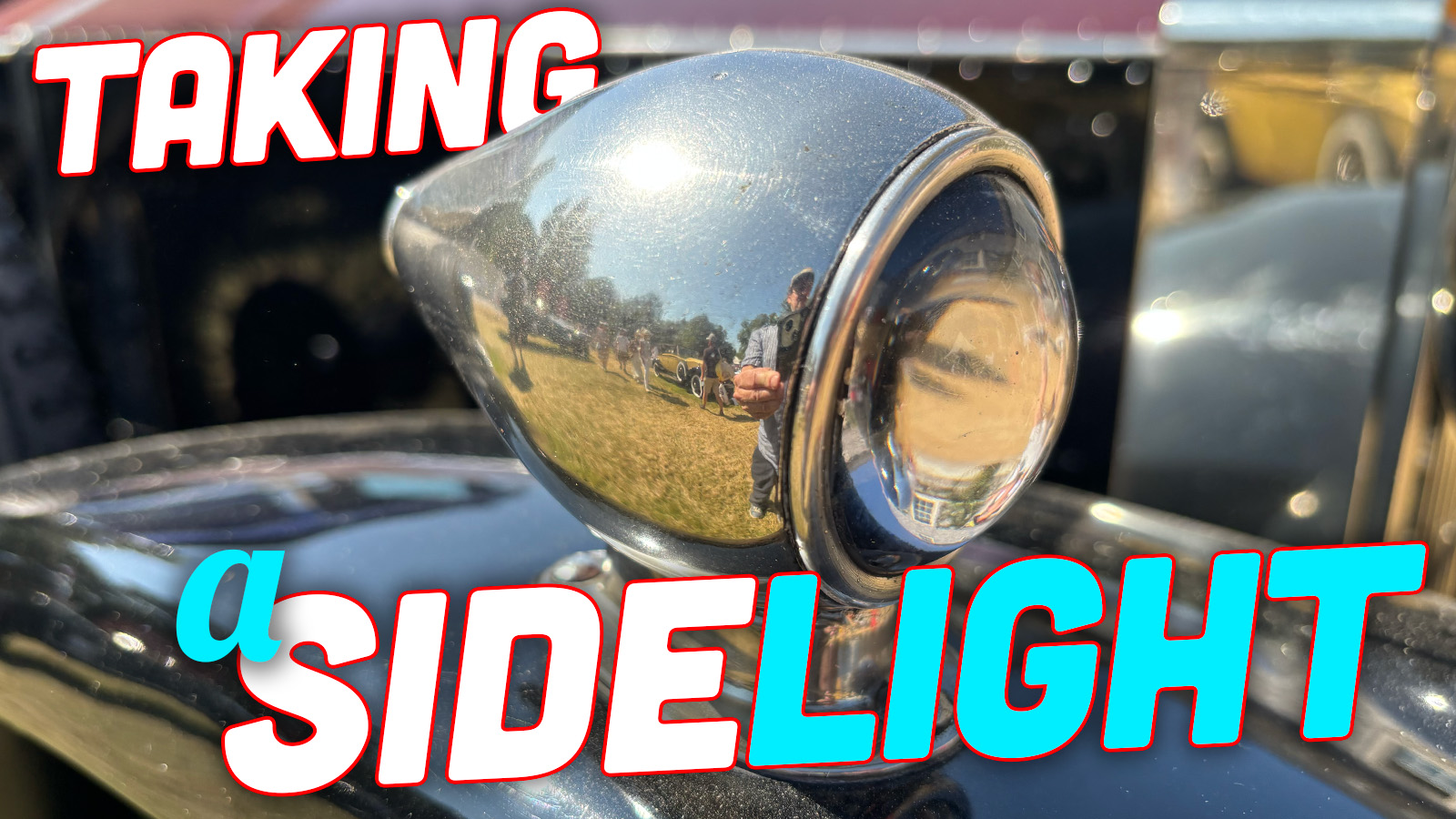




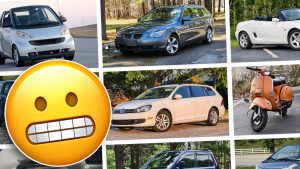
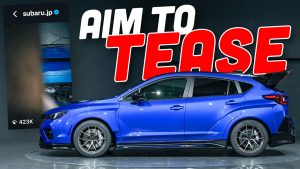

As an American who has only ever lived in rural settings, or very small rural towns, one of the most interesting things I saw when I visited France was how many folks left their parking lights illuminated overnight when street parking. I had never actually seen this usage out in the wild
My Land Rover Discovery I was perpetually baffling to the New Hampshire vehicle inspection system. The front parking lights were European-style small, low-wattage bulbs mounted in the lower edge of the headlight reflectors so they worked as parking and “city” headlights according to European standards of the time. And the big amber turn signals outboard of the headlights were just that — turn signals only. They didn’t illuminate except to flash for turns, so there were no steady amber lights ever showing to the front at night. But it did have side-marker bulbs in the same housings, where they wrapped around the front. (Plus it had amber side repeaters on the front fenders.) Meanwhile, in back, it had taillights+brake lights in the “normal” location at the corners above the bumper that were all-red and didn’t have any bulbs behind the strip that was supposed to be amber for European ones, but did still have European rear fog lights behind another red section that didn’t light up unless you turned on the switch on the dash. And then the turn signals were down in the bumper, in amber, alongside another set of red taillights that were only taillights and didn’t light up as brake lights. And the brake lights only worked when the ignition was in the “run” position — they wouldn’t come on if you stepped on the brake pedal when the ignition was off. (Probably as a proactive step to limit electrical shenanigans by the Prince of Darkness…)
So, with all of that, it irritated and confused the heck out of inspection “mechanics” — usually the least-experienced ones who’d been sent to the annual state-sponsored training and assigned to do the relatively time-consuming but not terribly profitable (unless they found things to fail) inspections. Or it was the shop know-it-all (usually a manager, not the senior mechanic) who swore they’d seen every car that had ever been allowed on the road. (They hadn’t…) I usually had to haul out the owner’s manual and the replacement bulb list which showed what each one did. (“How did they let that be legal???”) And demonstrate that the brake lights did, in fact, work, with the ignition turned on, and explain, “It’s British.” Which usually got something like, “I don’t want to see this thing ever again.”
In NH, inspections require that all light bulbs are working, and all OEM lights are working exactly as the manufacturer designed them to. Which means that oddball lighting setups must pass, if they’re working as intended. But the Disco’s intended lighting functionality wasn’t like American cars, or even typically encountered European imports (or even all model years of Disco I’s, because Land Rover…) it confused and irritated them to no end.
I’m thanking the automotive gods that NH inspections are going away… Maybe I’ll move back. 🙂
Your 2CV has 2 positions on the stalk, V and R (and 0 (zero) for OFF; you have to turn the knob on the stalk to switch between these), plus the stalk itself has to positions, because in France, back in the day, you we’re allowed to drive with only the parking lights on at night in bigger, well-lit cities. I think it was considered a courtesy to do that, in order to not blind other drivers and pedestrians. That’s why if you select V, the stalk switches between parking lights and low beam, because you could be driving in a darker part of the city, where you would want to have the lights on (V stands for Ville=City). The second position R will make the stalk switch between low and high beam, R stands for Route=(open) Road.
My Transit Connect van, built in Spain, has clear side lights and amber turn signals built into the headlight assemblies. Now I know why it’s set up that way.
It also has the turn signal “repeaters” in the front fenders.
I had to get a new lens for one of the repeaters from the dealer. I called it a repeater, but the parts guy had no idea what that was.
Ford US apparently calls it a ‘side flasher’.
Some erroneously called it “side markers”.
Huh, I’d never known this, and I don’t think I’ve ever seen anyone in the UK do this, so I don’t think anyone else knows about it either.
Same. I guess that’s why all US cars have a “parking lights” and “headlights” selection. I never understood the term parking lights. Now it makes sense.
The only time I have ever seen Parking lights used regularly in the US is in Riverside, IL. Look it up on Google Maps and you’ll see it has very unique winding roads. They also have very few (and not very bright) street lights. For these reasons the town still encourages those parking on the street to use their parking lights.
I think there must have been a situation a few years ago where cars were ticketed for this on a 40mph residential road in West Sussex that I used to travel on frequently, because a lot of cars gained window-mounted removable off-side parking lamps showing red to the rear and white to the front, presumably powered from the lighter socket.
That road has now been reclassified to a 30mph limit, and all the little parking lamps have disappeared.
Read the whole article expecting to find out where the most popular parking light bar is, but no luck. Must be members only.
My NSU TT had those little parking lights just ahead of the A-pillars. They were adorable! “Cute as a bug,” as we said back in Nashville.
Every BMW I have encountered has the German version. One simply leaves the turn signal towards the side you want illuminated. My e36, e38 and e39 all had this. Just the other day I accidentally turned on the side lights on my e36.
Newer ones now give you switches at the headlight switch. On my F44, I can just turn on the left or right side running lights with buttons. Now I’m kind of curious to see if they left the legacy method in tact too….
Audi does the same – leave the signal on and it turns that side on. The small indicator lights in the headlights were often referred to as city lights
I absolutely hate the Volkswagen’s cheap-arsed solution: using the turn signal indicator stalk to illuminate either side when the ignition is switched off and key removed.
Many times, I used the turn signal to claim the parking space before turning into it at the car parks. The steering wheel movement wasn’t great enough to cancel the signal itself. Then, I came back to my car and saw one side illuminating.
Position lights used 3 watt bulbs. If you have one front and one rear illuminated on the side of the car nearest the roadway, that’s 6 watts total. If the car is running a 6 volt battery (as many did), the math is super easy – it’s a 1 amp draw! 1 amp for 12 hours is… 12 amp-hours! That would be a pretty big drain on the smallish batteries of the day. Might be tough to start your car next morning!
As someone who has left just the interior dome light on overnight on a 70s car and awoken to a dead battery, I can say that those old incandescent lights, no matter how small, still consumed more electrons than a typical 80s battery can provide for 12ish hours.
I tried calling the Slappy White Memorial Library in Baltimore, but was only able to find contact info for the King Memorial Park where he’s buried. Can you provide contact details so we can fact check? 🙂
I Duck, Duck, Go’d it and only got references to the comedian and the King County Library in White Center, WA. Therefore, I have to disregard everything else in this article as probably non-factual.
I think Japan also mandated clear side lights for a long time too. For US spec versions they left the separate bulb but often put an amber lense over them.
JDM spec Datsun 720 front lights: https://s3.amazonaws.com/speedhunters-wp-production/wp-content/uploads/2016/08/01095607/Datsun-720-08-1200×800.jpg
US spec lights: https://cdn.dealeraccelerate.com/canyon/1/678/53880/1920×1440/w/1982-datsun-720-pickup-2wd-std-cab-lil-hustler
I miss my 720. Honestly, it was better than the Toyota V6 I replaced it with in almost every way. My only mistake with the 720 was not getting it with 4WD. When I moved to lake-effect-snow prone western New York it was kind of a necessity. But I bought it in California where I would never have used it.
I had some Triumph and BSA bikes with headlights that had and extra bulb socket in the reflector at the 12 o’clock position. Sidelight right in the middle. Given the “Prince of Darkness” electrics, I don’t know if it would stay lit over night.
My 1982 Mercedes Benz w123 had the German-style parking lights, controlled from the headlight switch. To the right was the regular 4 parking lights, then full headlights. But if you turned the knob to the left, you could turn on only the left-side or only the right-side parking lights. This was a USDM car, too.
My w124 was the same. I think it’s for parking on the side of the road.
Also, aren’t euro ‘parking’ lights actually ‘city’ lights, i.e. the lights you run when in a city?
Pull the knob back to the first indent for rear red fog lamp and the second for front fog lamps.
I’m pretty sure that at one point these HAD to show amber rather than white light in the US, even if they were separate from the turn signals. I want to say ’68 to at least the early ’90s.
A lot of Japanese cars had them combined with the side markers, with the turn signals separate and only facing straight ahead, with both using all-amber lenses on US-spec ones, only going to clear outer lenses with amber reflectors and bulb surrounds once the sealed beam headlight requirement was gone. For a while Geo Metros has both, all-amber on base models with sealed beams and clear outer lenses showing amber next to aero headlights on LSi’s.
Edit: Even some that predated that setup had lights with two compartments under an all-amber lens: Datsun 510 and Chevy Luv cone to mind.
Our US-spec ’79 Subaru had clear/white front parking lamps. Rare at the time but not illegal for that year.
https://bringatrailer.com/listing/1979-subaru-deluxe/
Maybe it’s like European carmakers today selling cars in the US with red rear turn signals when amber is now perfectly legal… catering to the perceived aesthetic preferences of the local market.
We had a 1978 Celica GT in the family, that had the clear side-markers in front with white bulbs. They turned on with the rest of the amber/red parking lights, which meant that the front turn signals were wired with dual-filament bulbs so they’d illuminate steady at low intensity, and flash the high-intensity filaments for signaling.
US mandated the turn signal indicators and position lamps in the front for 1963 model year onward to be in amber colour. Yet, the lens can be either clear or amber.
It’s cheaper to manufacture the lenses in single colour for the US market as US doesn’t require position lamps to be in white colour.
“They’d only be used alone, without full headlamps, in dawn/dusk/severe overcast low-light contexts”
Or in urban roads with streetlamps, though this may no longer be legal in the UK. https://flashbak.com/wp-content/uploads/2016/03/GettyImages-3063687-1280×815.jpg
“The UK versions would just leave all four lights on while parked – two front sidelights, taillights at the rear”
My father’s Rover 2000TC allowed you to light only one side.
Now European cars have DRLs, so sidelights are part of the past.
On of the vital tasks that was entrusted to little me was clipping one of these to the appropriate window and connecting the crocodile clips to the correct wires, check it worked and wind up the window,
https://dockerills.myshopify.com/cdn/shop/products/ParkingLight1-2_530x@2x.jpg?v=1658761303
My other task was to whack the Bendix drive on the end of the starter motor with a cheque book cover. I retrospect, at under ten I hand tiny hands.
I used to have a 1966 M-B 250S (Around 1980), and the parking lights had a party trick: When the parking lights were turned on (by pulling the headlamp knob half-way out, the ordinary American manner of the time ) and the ignition was off, the turn-signal stalk limited the parking lights to the chosen side only. In a lot of places in Europe people park with two wheels in the street and two wheels on the sidewalk (which is called the pavement in the UK). That stalk was generally amazing to a callow young American.
VW’s of that era had the same setup.